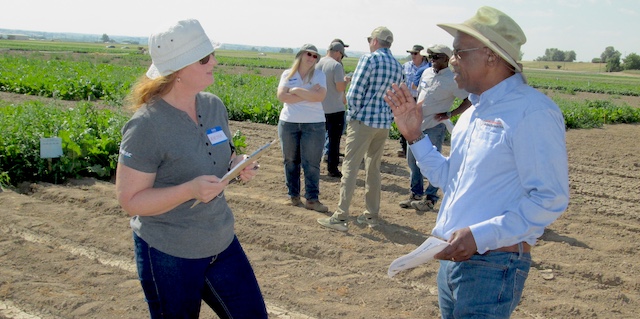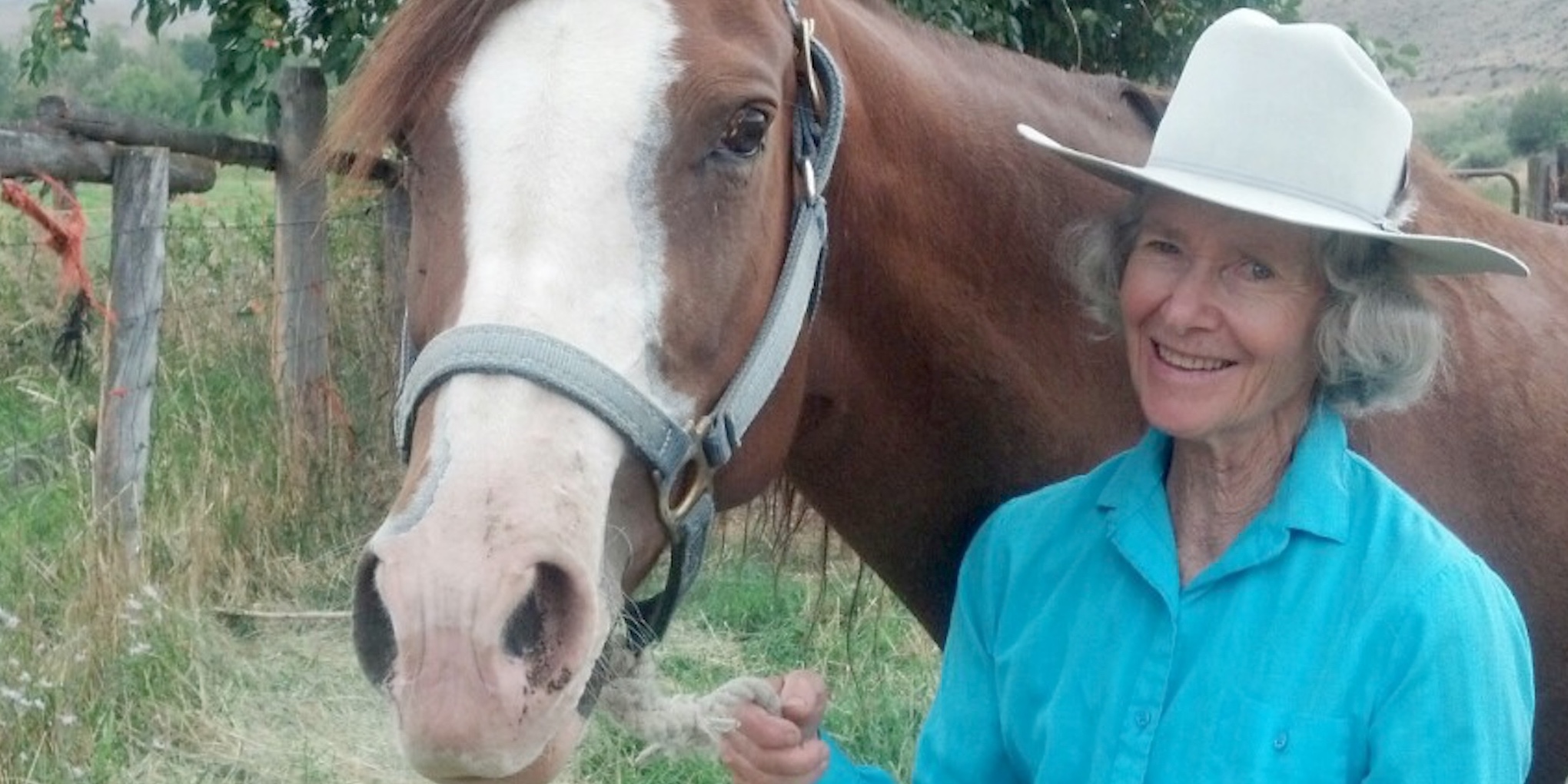Weed warriors gain some ground on Palmer amaranth
Published 4:53 pm Friday, June 13, 2025

- Maryna Serdani of crop protection company Nichino, Oregon State University weed scientist Joel Felix, speak at the Snake River Weed Research Tour June 12 at the OSU Malheur Experiment Station south of Ontario. (Brad Carlson/Capital Press)
Field researchers, farmers and input providers are making some progress in the battle against Palmer amaranth, an invasive pigweed fairly new to southern Idaho and southeastern Oregon.
Promising tools for controlling Palmer — in addition to manually removing the tall weed and its big, densely packed seed heads — have been developed.
They include a pre-emergent herbicide approved for use this year, a crop seed coating and rotating into alfalfa, small grains and corn that compete fairly well and provide additional herbicide options, weed scientists said at a research field day June 12 at the Oregon State University Malheur Experiment station south of Ontario.
Trending
An example of a seed coating strategy involves sugar beets. A “safener” coating applied to the seed could act as a beet-protecting antidote to pre-emergent herbicides applied to control Palmer, said Joel Felix, weed scientist at OSU Malheur. Trials continue.
As for rotating into a crop, winter wheat works well, “as it’s established early, before Palmer germinates,” said Clarke Alder, a weed scientist with Boise-based beet grower and processor Amalgamated Sugar.
Idaho and Oregon received federal Section 18 emergency approval for 2025 application of pre-emergent herbicide Goltix for control of Palmer amaranth in sugar beets.
Feedback has been “overwhelmingly positive. We are seeing great results,” said Zac Carpenter, product development manager with chemical company Adama, which is seeking a full label for use beyond this year.
Section 18 of the Federal Insecticide, Fungicide and Rodenticide Act authorizes the U.S. Environmental Protection Agency to allow emergency exemptions for unregistered uses of pesticides to address emergency conditions, according to EPA.
Under such an exemption, EPA allows limited use of the pesticide in defined geographic areas for a finite period once the agency determines the situation qualifies as an emergency.
Trending
In sugar beets, Goltix this year has been a welcome tool for controlling Palmer because it acts as a bridge from when a beet emerges to when it progresses to the two-leaf stage — a point at which additional effective herbicides can be applied, Alder said.
Albert Adjesiwor, a University of Idaho weed scientist who discovered Palmer amaranth in southern Idaho in 2022, said much of the Palmer found in Idaho and Oregon since then is resistant to glyphosate, commonly used post-emergence.
Palmer-impacted acres more than doubled in Idaho and Oregon between 2023 and 2024, to about 7,200, Alder said. Most impacted acres are in Idaho.
One of the problems with Palmer amaranth and Waterhemp — another pigweed of increasing concern — is that the male plants can spread pollen a long distance, adding risk that cross-pollination spreads genes of herbicide resistance to non-resistant plants, he said. Herbicide application remains a control option for non-resistant weeds.
Manual removal is effective, but “the main obstacle is cost,” primarily from labor, Alder said.
Palmer amaranth and Waterhemp also cause yield reduction and other problems in crops in addition to sugar beets, including potatoes and onions, he said.
“We continue to monitor the population in Idaho and Oregon so that we have an idea of how it’s going,” Alder said. He, Adjesiwor and Felix continue to work together on trials aimed at finding best practices for controlling Palmer amaranth.
Weed research tours are planned June 24 at the UI Aberdeen Research and Extension Center and June 25 at UI’s Kimberly R&E Center, where Adjesiwor is based.







